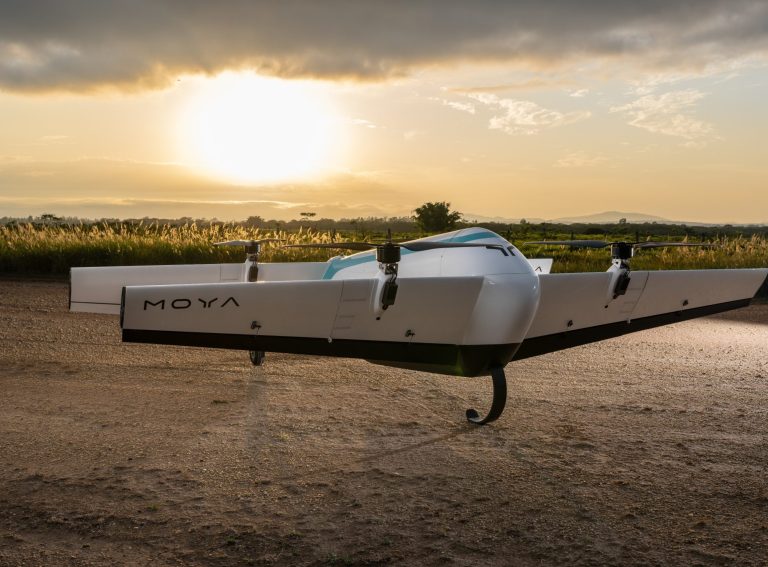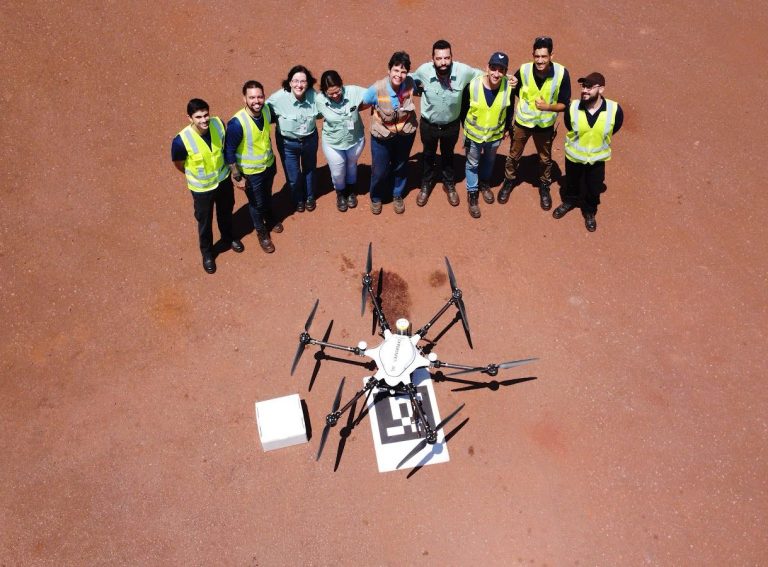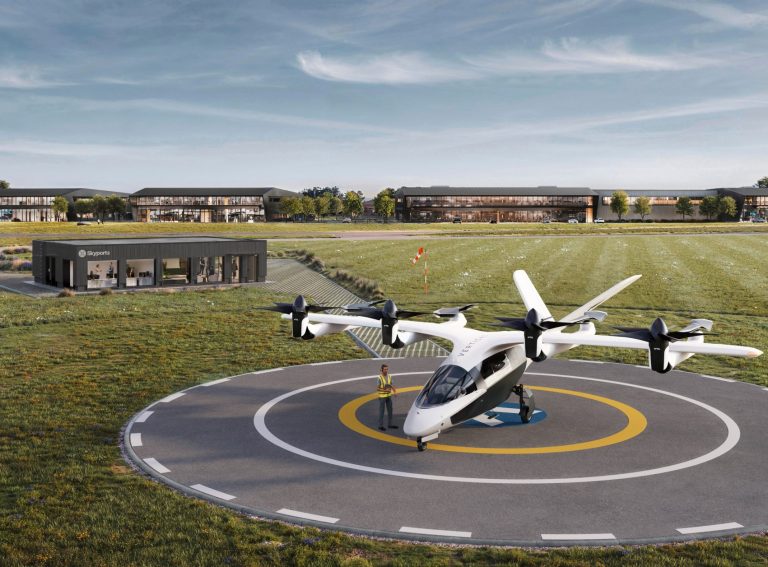Zag’s Partnership Manager Tom Woods travelled to London for a sit down with Michael Thompson, co-founder and CEO at Skyfly Technologies. Skyfly is a British eVTOL manufacturer targeting the private consumer. It is currently developing the Axe, a 2-seat personal vertical take-off and landing EV.
Zag: Can you tell us a bit about your entrepreneurial journey?
Michael: “It started when I left school. I had a place at university but in my gap year I learned to fly helicopters, embarking on my private pilot’s licence. Drones were also up-and-coming. I got a drone as a Christmas present and it all just snowballed from there when I started my first business called ‘The Drone Company’.
“We are a service provider using drones for a variety of applications, from filming, to inspections, surveys and mapping, and that business is still running to this day. But I wanted a different challenge which is how Skyfly started.
“Entrepreneurship was something I’ve always been brought up with, my father was a serial entrepreneur so I’ve come from a family where having your own business was the status quo. That was quite a big influence. He was a pilot too, loved flying which is how I got into it.”
Zag: What was the main catalyst for starting Skyfly?
Michael: “The main catalyst was a combination of two factors; firstly from flying helicopters, the freedom you get from being able to take off from a garden and fly down to a friend’s house, hotel or restaurant much faster than in a car sitting in traffic. I thought everyone should have access to this luxury.
“This combined with my experience with electric propulsion and drones led me to develop the initial concept for the Axe 2-seat eVTOL alongside our CTO William Brooks, an experienced and renowned aeronautical engineer.”
Zag: What do you think separates Skyfly from the rest of the eVTOL market?
Michael: “One of the biggest distinguishing factors is that we’re targeting the private market, not the commercial market and that has quite a few implications. The operation is nothing like a commercial eVTOL operation that looks to travel into city centres from airports and other central hubs.
“We are flying outside the city centres using existing infrastructure and landing permissions that have been in use for decades with grassroots general aviation.
“We think that travelling into city centres will continue to be carried out by trains, buses and taxis for the foreseeable future, maybe the next 10 years, until the regulations and infrastructure for commercial eVTOLs have been established and operational. Our route to the private market, using an existing kit-built certification route and existing infrastructure, can be realised a lot faster – this is our primary focus.
“The other main difference between us and the larger commercial players is that we thought it was really important for the aircraft to fly in a similar way to what people are familiar with, which is for it to fly like a conventional plane.
“Essentially, we’ve got wings with control surfaces that allow the aircraft to fly and glide in the event of a power failure – quite a lot of designs don’t have that capability. We’ve also massively increased the efficiency from the wings, making your energy usage a lot lower than a design with rotors only.”
Zag: Do you think you will ever target the public sector?
Michael: “We do think our aircraft could in the future be a training aircraft for the larger EVs. It’s a two seat, side-by-side configuration which is perfect for pilot training. This could be quite a big market for us and with that will come a requirement to have a commercially certified aircraft if we want to train commercial pilots.
“However, we are solely focussed on the private sector initially until we can see a commercially viable route to making the Axe a commercial proposition for paid services like air-taxis.”
Zag: When do you expect your Axe to be fully operational?
Michael: “Our aim is to start flight testing at the end of June/beginning of July and work on gaining the relevant certification for approximately one year, with deliveries beginning 2025.”
Zag: What are the main challenges facing the industry?
Michael: “Regulation and certification for the aircraft that are going to be flying is the main challenge at the moment – but the authorities are working well with the OEMs and progress is being made. Public acceptance also is a big challenge and how you convince people that it’s safe to fly.
“It’s similar to self-driving cars. With any new technology, it takes time for these things to be adopted. So that’s also quite a big challenge.
“Also, airspace regulation and air traffic regulation. If there’s going to be a lot more air traffic, especially around cities, how is that all going to be managed? It’s going to be a challenge.”
Zag: What more do you think the UK government could be doing to support the industry?
Michael: “I do have quite a lot to say on this. There’s been a lot of funding available mainly through the Aerospace Technology Institute and Innovate UK. And whilst I fully support these grants and what they’re doing, I don’t think they’re necessarily being awarded fairly. We’ve continually scored highly in our applications for these grants.
“But unfortunately, a lot of the funding does still go to the larger OEMs and big aerospace giants like Vertical Aerospace, Rolls Royce, GKN, etc. So again, it comes back to the idea of supporting the grassroots of aviation.
“I believe the eVTOL industry should be developed from the ground up, from grassroots through to commercial operation – instead, eVTOL has worked the other way round, it has begun with larger air taxi services rather than starting with smaller aircraft and private pilots.
“So it’s been a real shame that we haven’t received any help from the government. In terms of our eligibility for what we’re doing, we’re hugely relevant, especially in the fact that we’ve got the pilot training side that will eventually support the larger OEMs, so it’s sort of working against them in a way.
“There has been great support and great initiatives set up like the ‘Future Flight Challenge’ but again, the projects that get funding, a lot goes to the larger OEMs or the large aerospace commercial companies and less and less gets filtered down to the smaller, startup organisations.
“Whilst the UK Government is doing a lot to support the industry, I don’t know if the allocation of funds has necessarily been distributed correctly.”
Zag: So what’s next for Skyfly?
Michael: “We want to start delivering aircraft to customers as quickly as possible. We’ve already got an order book of 35 aircraft today. The first movers have received a discounted price in order to get the aircraft to market and flying. We also have plans for a larger aircraft later down the line and already loosely have the design done, but we’ve fully focused on this first model for now.”
Zag: Finally, who should we interview next? And what sort of questions would you like to hear them answer?
Michael: “I’d recommend you talk with the guys at Aerovolt, they are developing a charging network in the UK for electric aircraft. The team is utilising the existing network of small grassroot aviation airfields in the UK.
“They’re doing great stuff and have a similar ethos to us in that with aviation, the industry has gone straight from nothing to building big six feat commercial air taxis, rather than starting with a private sector model which then expands into the commercial sector. This is the right path and the UK government must get behind this.”




